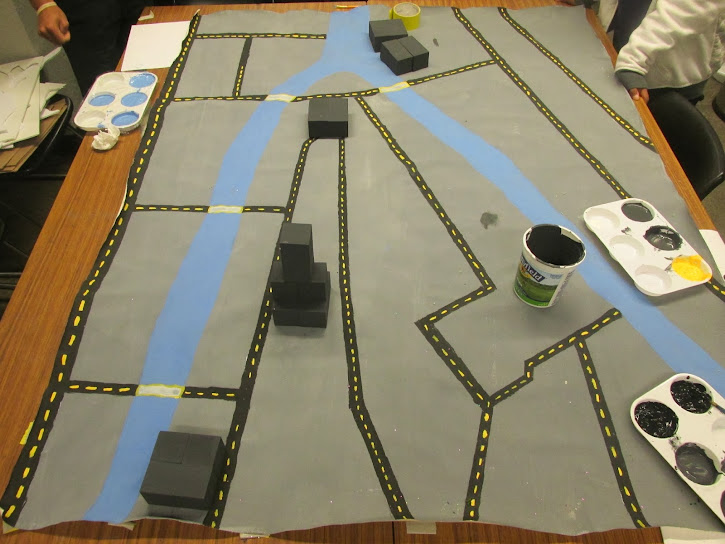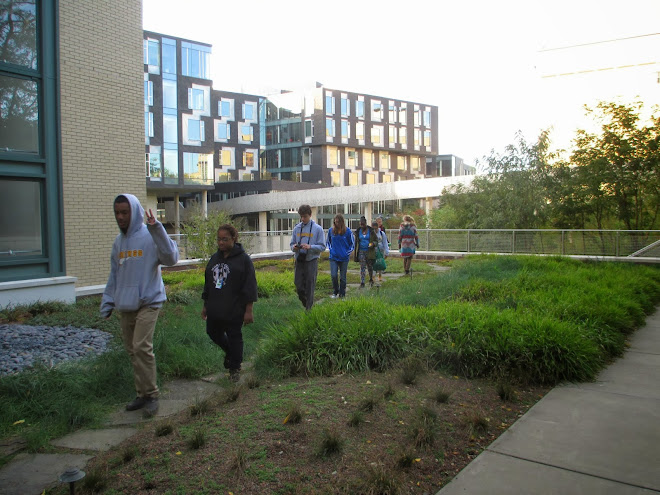The Energy Net crew needs to make some changes to the exhibit. Over the weekend, visitors took their toll on some of the exhibit pieces.
Observation 1: Green roof pieces and rain gardens proved to be less durable than expected, crumbling to pieces over the weekend. Today the teens replaced these components with simple green foam squares. To improve access to the city mat, we lifted the mat off the floor and onto a short table.
Observation 2: Watershed model needs a sturdier box. Over the weekend, the plexiglass piece was broken in two by small children hanging on it. We are working on getting a stronger box to put the watershed model in.
The teens had an impromptu poetry session today documenting challenges with the exhibit. Here is a sampling of their poems.
Destroyed
By: Anna Bowin
How could this happen in three days?
How could they demolish our city?
Everything has come to an end.
It was too happy to be true, it was too happy to last.
The city is dead!
 |
| Destroyed rain gardens. |
Paradise Lost
By: E.J. Gruber
Map is clearly suffering the after effects,
Of a recent Godzilla attack on the city,
Or more likely deliquent teenagers.
 |
| The impacts of Godzilla..... |
Disaster
By: Michelle Sheppard
The city is dead,
Alone and scared,
Not covered in red,
But much is not neared.
The grass is fading day by day.
There are no trees healthy and green,
There are no trees healthy and green,
The water is not coming out to play,
The thing who did this is really mean.
Only if they had a way.
The city is on its own.
If it was made out of clay,
It would have went to the bone.
The pet has been stolen,
From the city.
It was the only thing holding
They should really take a pity.
 |
| Disaster in the watershed. |
Reconstruction
By: Isaiah Spencer
As we have seen,
In the poems before,
Destroyed, Attacked, Disaster,
Such negative scores.
I am here to tell,
of a more positive tale.
Yes, Pittsburgh was destroyed.
But, there still is hope,
And people to be employed.
We can rebuild this city,
And do it really quickly,
If we have more help,
It would sure be nifty.
.JPG)
.JPG)
.JPG)











































